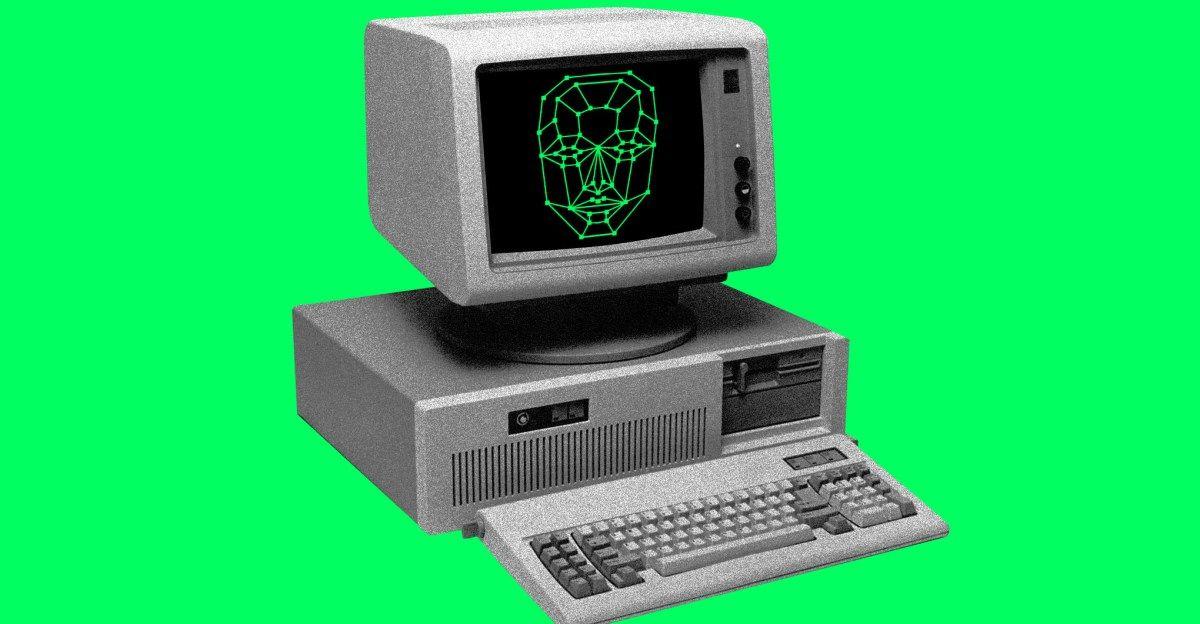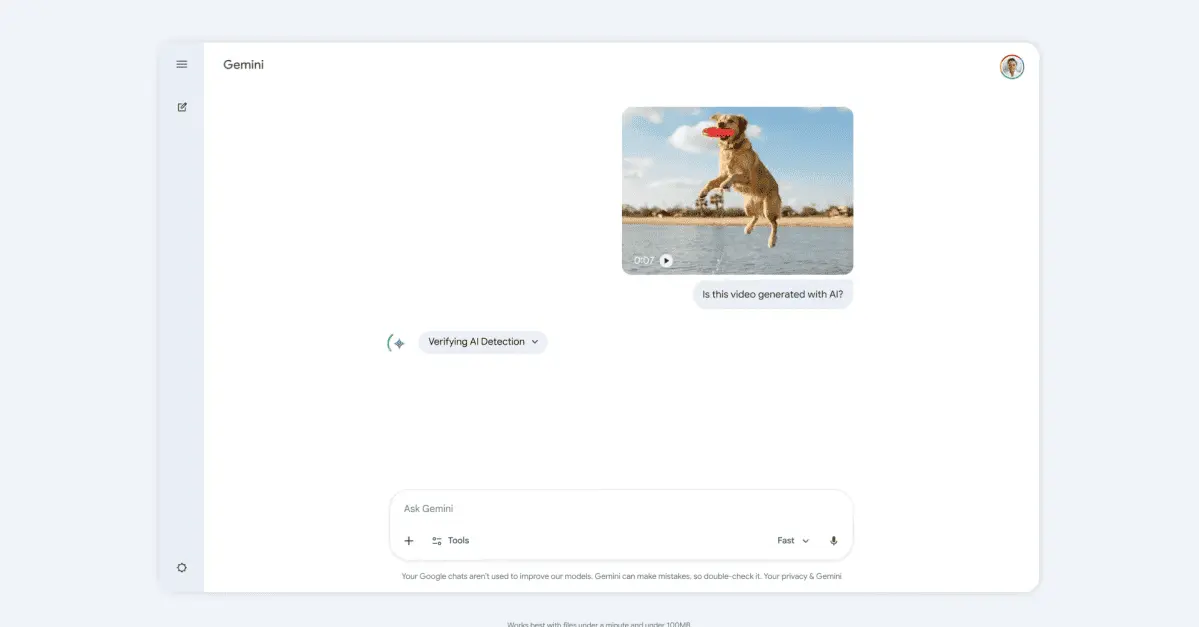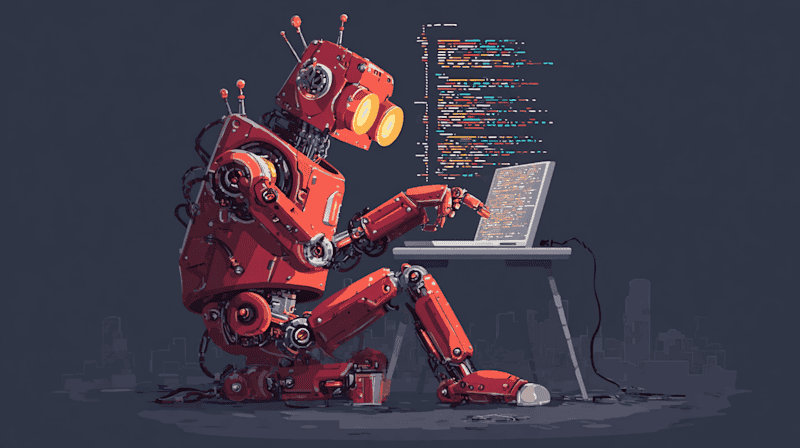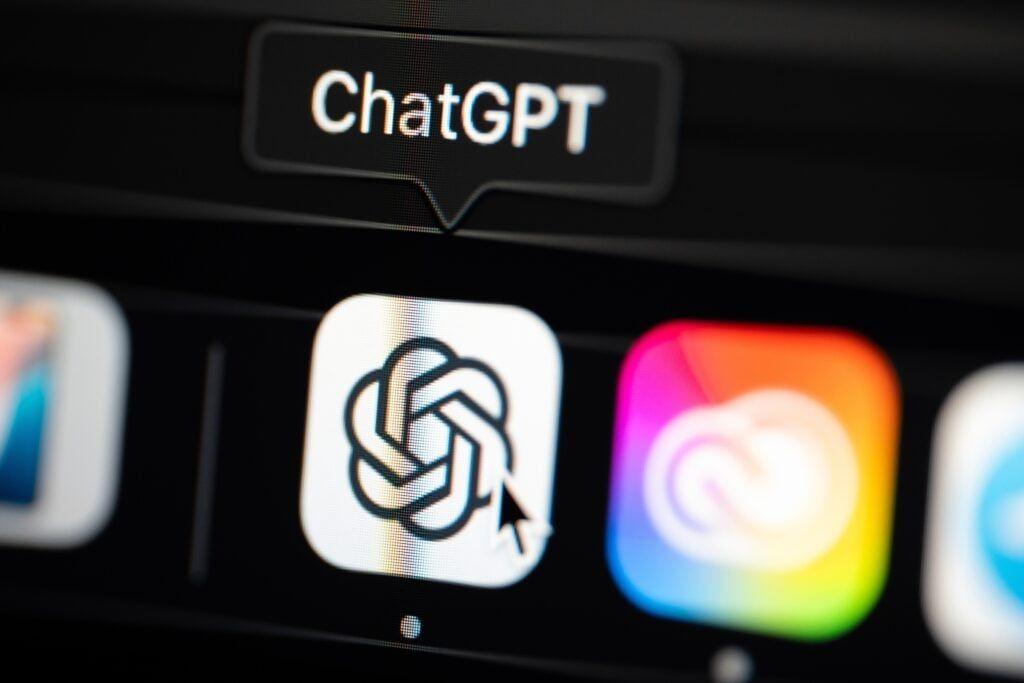OpenAI's Sora 2 Hits 1M Downloads, Introduces Longer Videos and Storyboarding
11 Sources
11 Sources
[1]
Sora hit 1M downloads faster than ChatGPT | TechCrunch
After OpenAI's video-generating app Sora surged to the No. 1 position on the U.S. App Store, it has now, technically, experienced a bigger first week than ChatGPT on iOS, according to new data from app intelligence provider Appfigures. Its estimates show that Sora saw 627,000 iOS downloads in its first seven days of availability, compared with ChatGPT's 606,000 iOS downloads during its first week. Shortly after the publication of this article, OpenAI's head of Sora, Bill Peebles, announced that, across platforms, Sora reached a million downloads (across platforms, not just iOS) in under five days. He said that's faster than ChatGPT did, despite Sora being in invite-only mode. ChatGPT was available only in the U.S. during its first week, while Sora is currently offered in the U.S. and Canada at launch. Still, Appfigures data indicated that Canada contributed about 45,000 installs, so the Sora launch was about 96% of ChatGPT's launch on iOS alone, if the data had been based on the U.S. numbers only. This level of consumer adoption is worth noting because Sora requires an invite to get in, while ChatGPT was publicly available at launch. That makes Sora's performance more impressive. During its first day, Sora saw 56,000 iOS app installs in short order, bumping the app to become the No. 3 Top Overall app on the U.S. App Store, Appfigures said. By Friday, October 3, it reached No. 1. That surge had already put Sora's debut ahead of other major AI app launches, including Anthropic's Claude and Microsoft's Copilot, and put it on par with xAI's Grok launch. A quick scan of social media provides plenty of anecdotes that support Appfigures' data. Sora videos, which uses the new Sora 2 video model and gives users the ability to generate realistic deepfakes, seem to be everywhere. Users are even creating deepfakes of dead people, a use case that has prompted Zelda Williams, daughter of the late actor Robin Williams, to ask folks to stop sending her AI-generated images of her father. Per Appfigures, the app has seen steady adoption since its first day on the market, September 30, 2025. Its data indicates that daily downloads on iOS hit a high mark of 107,800 downloads on October 1, 2025. It has since seen between lows of 84,400 daily installs (on October 6) and 98,500 daily installs (on October 4). While that's not quite as high as earlier in the week, it's still decent numbers for an app that not everyone can yet use.
[2]
Your Sora AI Videos Can Be Longer Now, But This Other Update Holds More Intrigue
It's only been three weeks since OpenAI dropped its AI slop (sorry, AI video) app, Sora. A lot has happened in that time, but it means that it's about time for an initial batch of updates, including a new storyboarding feature and the ability to make longer videos, the company announced Thursday. Free Sora users on the iPhone app and web (which is the only way Android users can use Sora at the moment) will be able to make videos up to 15 seconds long. Pro users will get an extra 10 seconds when they create on the web, for a total of 25 seconds. Your Sora account is linked to your ChatGPT account, so if you pay for ChatGPT Pro, you're a paying Sora user. You can see all the payment plans for more info. This comes one day after Google announced it had upgraded its popular AI video model, Veo 3, to handle longer video generations. Storyboarding will let Pro Sora users plan out videos on the web before generating them. (Free users don't have access as of now.) Storyboarding has long been a part of the professional filmmaking process, and it's occasionally included in more professional software programs. Google's AI filmmaking program Flow allows for storyboarding, for example. But this is an interesting and somewhat unexpected addition to Sora. Read More: Here's the Quickest Way to Get a Special Code for the Viral Sora 2 App Sora's only been around a short time, but the vibe on the app is focused on shorter, funny videos, echoing OpenAI's claim that the app is designed to help people connect with their friends. So professional-grade videos -- that are longer and more well-planned -- aren't very common. These updates will likely change that. It could be a sign that OpenAI is hoping to draw in the professional creators it has previously alienated. Storyboarding, longer run times and higher resolutions are all things that professional creators would need, and OpenAI seems to be tackling them quickly. But OpenAI has a rocky past with professional creators. Before Sora launched, OpenAI reportedly approached talent agencies and other firms like gaming and streaming companies and said they would need to opt out of having their intellectual property accessible via Sora. Meaning if Nintendo didn't want Sora users to be able to make AI videos of Pikachu, it needed to tell OpenAI that. That's not how copyright law works, and OpenAI changed its policies a few days after Sora's launch and added more controls over how your likeness can be used. It was just the latest episode in an ongoing battle between AI companies and creators. Don't miss any of our unbiased tech content and lab-based reviews. Add CNET as a preferred Google source. Sora might be reminiscent of TikTok or Instagram Reels, but it's unlike any other app. Nothing you see on Sora is real; every video is AI-generated. While it may seem like your Facebook and Instagram feed is all AI anyway, Sora is truly an AI-only social app. I felt like I was in an AI deepfake fever dream while scrolling Sora. Its scarily realistic videos are hard to distinguish from reality. That's made all the more worrisome with Sora's chief feature, cameo, which lets you use other people's likenesses to create nearly any kind of AI video. (Disclosure: Ziff Davis, CNET's parent company, in April filed a lawsuit against OpenAI, alleging it infringed Ziff Davis copyrights in training and operating its AI systems.)
[3]
OpenAI's Sora has already hit more than 1 million downloads
OpenAI's social AI video-generating app, Sora, has reached over 1 million downloads in fewer than five days since its launch. That's according to Sora head Bill Peebles, who said on Wednesday that Sora racked up downloads faster than ChatGPT did at launch despite being an invite-only app. The company launched its new Sora app for iOS on September 30th, giving users the ability to scroll through a feed of AI-generated videos, as well as create ones of their own using OpenAI's new Sora 2 model. It also lets users insert the likeness of themselves or a friend into an AI video with a "cameos" feature. My colleague Hayden Field found that the app is filled with memes, OpenAI employees deepfaking themselves, and what can only be described as AI-generated slop. Already, the Sora app has sparked backlash after users began generating copyrighted characters in circumstances far from brand-friendly, leading OpenAI to give those copyright holders more control over their content. The company has started letting users specify how their likeness is used in Sora as well. "Team working hard to keep up with surging growth," Peebles said. "More features and fixes to overmoderation on the way!" The Sora app is only available in the US and Canada for now, and currently sits at the top of Apple's App Store.
[4]
Sora 2 Now Lets You Make 15-Second Clips, 25 Seconds for $200 Pro Users
With over a decade of experience reporting on consumer technology, James covers mobile phones, apps, operating systems, wearables, AI, and more. Don't miss out on our latest stories. Add PCMag as a preferred source on Google. OpenAI's video-generation phenomenon Sora 2 is now more useful than ever with the tool allowing everyone to make longer clips. OpenAI says it's "perfect for ideas that need a few extra beats to fully unfold." The new update for Sora 2 allows all users to make clips up to 15 seconds long. Previously, Sora 2 has been limiting standard users to 10 second clips or shorter. If you have a Pro subscription for ChatGPT, you can now get 25-second-long clips allowing you to tell longer stories. That subscription isn't cheap though as it's $200 a month, giving you access to various features across OpenAI's services. The change was announced by OpenAI on Oct. 16 showing a new 25-second-long video with an AI-generated secret agent riding a motorbike to chase down a train. OpenAI's post on X made a reference to The Fast and The Furious film series referring to this update as "2 Sora 2 updates." That appears to be a reference to 2003's 2 Fast 2 Furious. The extended clips for Pro subscribers are currently only available on the web version of Sora. Those looking to make 15 second long videos can do so on the app and web versions of OpenAI's tool. You can turn on extended clips in the app by going to Create video and then selecting Duration. In the web version, it's under the Settings icon where it also says Duration to toggle the length. If you choose to use a 15-second clip, it'll count toward two videos of your daily limit, while 25-second clips jump up to four credits. If you have a Pro subscription, you'll also get access to the brand's newly launched storyboard feature. The original Sora had a similar feature which allows you to plan out an AI video frame by frame, using prompts to describe what you want each AI-generated shot to show. This option is currently only available in the web version of Sora 2. Sora 2 remains at the top of the free iPhone apps chart on the Apple App Store, with ChatGPT now relegated to second place. It's believed Sora 2 is set to come to Android sooner rather than later as a listing for the app appeared on the Google Play Store on Oct. 11. However, we've yet to hear anything official from OpenAI.
[5]
OpenAI's Sora hit 1 million downloads in less than five days
Bill Peebles, head of Sora at OpenAI, shared the milestone in a post on X late Wednesday. He said Sora reached 1 million downloads even faster than ChatGPT, the company's popular AI chatbot that supports 800 million weekly active users. Sora allows users to generate short videos for free by typing in a prompt. The app is only available on iOS devices and is invite-based, which means people need a code to access it. Despite these restrictions, Sora has climbed to the No. 1 spot in Apple's App Store. "Team [is] working hard to keep up with surging growth," Peebles wrote. Sora's launch has also sparked intense backlash, namely around whether the app infringes on copyrights. CNBC viewed videos on the platform that included characters from shows like "SpongeBob SquarePants," "Rick and Morty" and "South Park," and was able to generate many characters independently.
[6]
OpenAI's Sora AI Video App Hits 1 Million Downloads
Sora, OpenAI's app for creating AI-generated video, has been downloaded more than one million times. OpenAI's Sora lead, Bill Peebles, shared the information on social media network X last night. Peebles said that Sora hit one million app downloads even faster than ChatGPT did, with interest in the app soaring despite the fact that it's invite only and only available in the U.S. and Canada at the current time. Sora was released at the end of September. It's designed to generate AI videos using realistic videos of real people and their friends. Each user uploads a "cameo" or short video, which they can then use with AI prompts. The app includes an option for users to share their cameos, allowing select people or anyone on Sora to generate AI video with their likeness. Sora has been criticized for producing AI slop, but that hasn't affected its popularity. It continues to be the top free app on Apple's App Store. Sora uses OpenAI's Sora 2 video generation model that can handle complex movements for realistic, cinematic, and anime-style video. Sora 2 supports generating audio, so all the video creations on Sora are accompanied by sound. OpenAI designed Sora to display content based on people the user follows or interacts with, and the app polls users regularly on their wellbeing. There are controls to modify what's displayed in a feed, and OpenAI says that it is meant to be used with friends, which is why it's invite only. Sora is free to download, and OpenAI is not restricting video generation to subscribers for now. [Direct Link]
[7]
OpenAI just gave Sora 2 two big upgrades - including longer videos for free users
OpenAI launched Sora 2 earlier this month, allowing for incredibly impressive AI-generated video OpenAI just announced a new update to its market-leading AI video generation tool, Sora 2, and scrolling social media is going to become even harder to tell real from fake. On X, the official OpenAI account shared news of "2 Sora 2 updates", and both of the new upgrades give users even more power when creating AI-generated video. The first, and most headline-worthy update is the new ability for all users to generate videos up to 15 seconds in length on the Sora 2 app or on the web. Previously, the longest videos you could generate with the tool were around 10 seconds. Pro users who pay the hefty $200/£200 a month subscription for ChatGPT and all other top-of-the-range OpenAI tools will be able to generate 25 seconds of video with Sora 2 - a big increase from the previous limit. The second feature announced today for Pro users is the arrival of Sora's Storyboard tool, which allows users to piece together clips and create impressive AI-generated videos with multiple scenes. OpenAI has not announced when or if this Sora 2 feature will become available for Plus and Free users in the future. If you live in the U.S or Canada, you can try Sora 2 today via the Sora app or at www.sora.com. Those of us in the rest of the world will need to wait patiently before we can participate in creating short videos that are starting to become indistinguishable from reality. I was off sick last week with COVID and missed Sora 2's initial launch. While I was unwell, I stayed offline, taking a much-needed break from the internet to let my mind and body recover. Returning to work this week, I've found social media apps like Instagram and X eye-opening to say the least, and with the length of Sora 2 videos increasing, I'm not sure how I feel about the whole thing. If we look closely, most of us can still determine what has been AI-generated and what's reality, but while doomscrolling through Instagram, it's as if your mind plays a trick on you, and your first instinct isn't to question if something is real or not. Just this week, I've been caught out twice. The first was a video of one of my favorite wrestlers, Roman Reigns, meeting soccer superstar Kylian Mbappé, and the second, a fake launch of Scotland's next Adidas jersey. Both times, I shared the content with friends before rationalizing and realizing neither was real. With Sora 2 getting more powerful by the day, and rumors of Google launching Gemini 3 next week alongside an upgraded version of Veo, this is only the beginning, and I'm scared of what's to come.
[8]
Sora 2 just unlocked longer clips, but there's a catch
You'll need Pro on the web for 25 second videos and storyboard tools What's happened? OpenAI lifted Sora 2's clip ceiling and reshuffled where its best tools live. Everyone can now generate up to 15 seconds on the app and in the browser, while Pro users can create even longer clips. According to the OpenAI X account, videos created by Pro subscribers in the browser can hit 25 seconds and adds a Storyboard option in the sora.com composer. All users on app and web top out at 15 seconds, but there's no access to storyboard creation. Before this, clips typically sat near 10 seconds, with Pro roughly 20 seconds in the browser. Sora is powered by ChatGPT. This is important because: Those extra seconds can turn a prompt into a full scene, not just a flash. With more runway, creators can set tone, build a plot, then actually land with a good story. Time to stage, turn, and conclude so shots feel intentional. Room to layer pacing cues, camera moves, and mood shifts without cramming. For Pros, pairing storyboards with 25 seconds maps a sequence before you spend credits. Recommended Videos Why should I care? The update draws a clean line between casual use and committed projects. Quick drafts and social snippets fit inside 15 seconds on either surface, while structured sequences benefit from the browser's higher ceiling and planning tools. Stay free for shorts, mood pieces, or fast tests that fit one scene. Choose Pro in the browser when you want longer videos, tighter pacing, and storyboard planning that cuts retries and polish time for small teams. This positions Sora 2 as one of the best AI video generators out today. Okay, so what's next? Watch for tools that convert 25 seconds into real edits and not just longer renders. We can also track how rivals answer this jump, since the AI video arms race is as much about control as it is about seconds. Google's platform is already pushing hard on controls with Flow and Veo, which raises the bar for Sora. A higher cap beyond 25 seconds would unlock fuller explainers and cleaner arcs. Web storyboards need finer control, like shot reordering, trims, and quick overlays so timing tweaks do not require a reroll. If competitors push past 25 seconds or ship lightweight timelines, expect a sprint on planning features, and Sora will need faster iteration loops inside the browser.
[9]
OpenAI's Sora 2 now makes 25-second videos
The new Storyboard feature, exclusive to Pro users, is available through the sora.com browser composer. OpenAI has updated its Sora 2 video generation platform, increasing the maximum clip length for all users. The changes also introduce exclusive capabilities for Pro subscribers, including a new Storyboard option, available only through the sora.com browser composer. Following the update, all users can now generate video clips up to 15 seconds in length on both the mobile application and the web interface. A key distinction has been made for Pro subscribers, who gain the ability to create clips up to 25 seconds long when using the browser version. According to a statement from the OpenAI X account, these paying users also receive exclusive access to the Storyboard feature within the sora.com composer. This new structure marks an increase from the previous limits, which were typically around 10 seconds for standard users and roughly 20 seconds for Pro users operating in the browser. The Sora 2 model itself is powered by OpenAI's ChatGPT technology. The extended generation time is intended to allow creators to develop more complete scenes from a single prompt. With additional seconds, a video can establish a tone, build a brief plot, and provide a narrative conclusion. This runway offers more space for shots to feel intentional, with sufficient time to stage action and execute narrative turns. It also provides room to layer elements such as pacing cues, deliberate camera movements, and shifts in mood without the final output feeling compressed. For professional users, the ability to pair a 25-second clip capacity with the new storyboard functionality allows for a sequence to be mapped out before committing generation credits. Sora becomes a hit and a headache for OpenAI with 1M downloads This update establishes a clearer division between casual and more structured video creation projects. The 15-second limit available to all users is positioned for producing quick drafts, short-form social media snippets, mood pieces, or fast conceptual tests that fit within a single scene. The Pro subscription, when accessed via a browser, is geared toward users who require longer videos, tighter pacing control, and the efficiency of storyboard planning. This planning tool is designed to reduce the number of retries and the amount of time spent on polishing content, which is a benefit for small teams. The updated feature set positions Sora 2 among the leading AI video generators currently available. Future development may focus on tools that transform these 25-second generations into genuine edits rather than just longer rendered clips. The competitive landscape will also be shaped by how rivals respond, as the field of AI video generation involves advancements in user control as much as in clip duration. Google's Flow and Veo platforms are reportedly advancing their control features, creating a higher standard for Sora. A video cap beyond 25 seconds could enable fuller explainer videos and cleaner narrative arcs. The web-based storyboards will require finer controls, such as shot reordering, trimming capabilities, and quick overlays, to allow for timing adjustments without needing a complete reroll. If competitors release versions that surpass the 25-second mark or introduce lightweight editing timelines, Sora will likely need to accelerate the development of its planning features and improve iteration loops within its browser interface.
[10]
Sora becomes a hit and a headache for OpenAI with 1M downloads
The download figures were announced by Sora boss Bill Peebles in a post on the social media platform X. Peebles described the numbers as "surging growth," which occurred even with the app's availability restricted to invite-only users within North America. OpenAI's text-to-video app Sora reached one million downloads in North America in under five days, a milestone achieved faster than ChatGPT, amid growing criticism over its handling of copyright and depictions of deceased public figures. The download figures were announced by Sora boss Bill Peebles in a post on the social media platform X. Peebles described the numbers as "surging growth," which occurred even with the app's availability restricted to invite-only users within North America. During this initial launch period, Sora also secured the top position on the Apple App Store charts in the United States. The application functions by generating realistic-looking videos, up to ten seconds in length, based on simple text prompts provided by the user. The platform is designed to make it easy for users to post the videos they have created directly to social media. This rapid adoption has been accompanied by significant online criticism regarding the app's policies on copyrighted material and its generation of images featuring deceased individuals. The app's design facilitating easy posting has resulted in what has been described as a deluge of these videos across social feeds. Among the content generated and widely shared are depictions of high-profile deceased celebrities, including musicians Michael Jackson and Tupac Shakur. The controversy stems from the application's capacity to create convincing representations from minimal user input. Public reaction to this capability has been pointed. Three days ago, Zelda Williams, daughter of the actor and comic Robin Williams who died in 2014, publicly asked people to stop distributing AI-generated videos of her father. Press reports have directly linked this plea to the increasing popularity of Sora. In response to such concerns, an OpenAI spokesperson stated in an email to US news site Axios that there are "strong free speech interests" in permitting the depiction of historical figures. The spokesperson added that for public figures who are "recently deceased," authorized persons can request that their likenesses not be used, although the company did not provide a specific definition for what timeframe constitutes "recent." The use of protected intellectual property extends to characters from popular films, television shows, and video games. One widely circulated deep-fake video created with Sora shows OpenAI CEO Sam Altman alongside several Pokémon characters, in which his likeness is depicted saying, "I hope Nintendo doesn't sue us," as reported by CNBC. Another viral deep-fake video shows an image of Altman grilling and consuming the well-known Pikachu mascot from the game series. To date, Nintendo has not publicly revealed any plans to pursue legal action against OpenAI or in relation to Sora-generated content. The issue reflects a wider trend, as several companies developing popular generative AI systems, including OpenAI itself, are currently engaged in legal battles with creators and the rights holders of creative works. These legal disputes carry the potential for substantial financial consequences for the technology firms. As an example of the potential costs, the AI firm Anthropic recently agreed to a settlement of $1.5 billion (£1.11 bn) to resolve a class-action lawsuit. The suit was filed by authors who claimed the company had used their work without permission to train its AI models. OpenAI has indicated it is adapting its strategy in response to these emerging issues. In a blog post dated October 4, Sam Altman wrote that the company had been "learning quickly from how people are using Sora and taking feedback from users, rights holders, and other interested groups." Altman outlined specific future actions, stating the firm would "give rights holders more granular control over generation of characters." He also detailed that the company has plans to implement a form of revenue-sharing arrangement with rights holders in the future. In the post, Altman suggested that videos produced by Sora could be considered a new kind of "interactive fan fiction."
[11]
OpenAI allows 15-second videos for all Sora 2 users, 25 seconds for Pro users
OpenAI is now letting users create longer video clips on its AI video app Sora 2. Pro users get extended generation times and access to a storyboard feature. OpenAI is also introducing a revenue-sharing plan. Content owners will have control over character usage. This move addresses concerns from Hollywood. The app has seen significant user interest. In its latest update, OpenAI has allowed all users of its short AI video app Sora 2 to generate 15-second-long clips on the app and web versions. The update also allows 25 seconds of artificial intelligence generated videos via its web version for Pro users. The ChatGPT parent has also made the storyboard feature on Sora 2 available on web version for Pro users. Storyboards are an editing tool that lets users create and control video narratives by arranging customisable elements representing key moments -- or scene cards -- on a timeline. Sora 2 had shot to the top of Apple's App Store rankings on October 3, just three days after its launch. This occurred even though the app is available on an invite-only basis in the United States and Canada What is Sora 2 Sora 2 users can share their creations in a vertical feed similar to TikTok or Instagram Reels. OpenAI, however, claims to have prioritised content from users' networks with restrictions on infinite scrolling. The video generator will initially be free with "generous limits," though usage will be constrained by the shortage of computing power needed for video generation. The app's exclusive invite-only status has created additional buzz, with access codes reportedly being resold on eBay for $10-45 despite such transactions violating OpenAI's terms, which could lead to the access being denied without a refund. Sora 2 revenue-sharing model ChatGPT and Sora parent OpenAI is expected to introduce controls allowing the owners of content rights to dictate how their characters are used in its AI video-generating tool and plans to share revenue with those who permit such use. The company will give rights holders "more granular control over generation of characters," Altman said in a blog post earlier this month. Facing mounting pressure from Hollywood studios and talent agencies, Altman reversed the policy and said in the post that the company would shift to an opt-in system. "We are hearing from a lot of rightsholders who are very excited for this new kind of "interactive fan fiction" and think this new kind of engagement will accrue a lot of value to them, but want the ability to specify how their characters can be used (including not at all)'', his post read.
Share
Share
Copy Link
OpenAI's AI video generation app Sora 2 reaches 1 million downloads in record time, surpassing ChatGPT's initial success. The app introduces new features including longer video generation and storyboarding capabilities.
Sora 2's Rapid Ascent
OpenAI's video-generating app Sora 2 has taken the AI world by storm, reaching an impressive milestone of 1 million downloads in less than five days since its launch
1
5
. This achievement is particularly noteworthy as it outpaces the initial success of ChatGPT, despite Sora 2 being available only through invitations3
.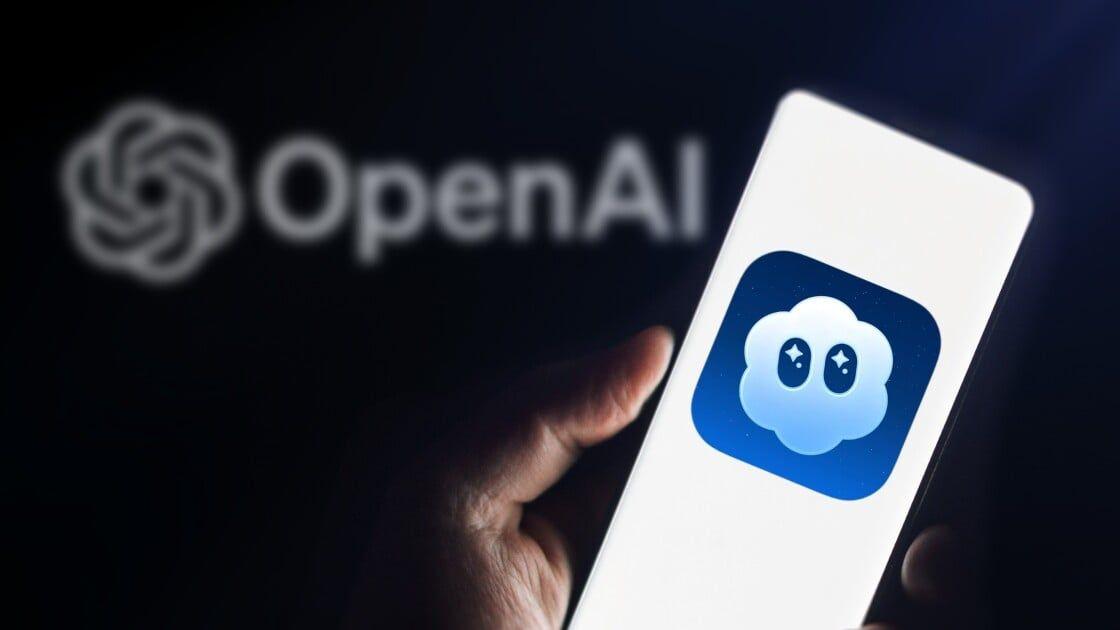
Source: PC Magazine
The app's popularity is evident from its rapid climb to the top of the U.S. App Store, where it secured the No. 1 position shortly after its release
1
. Sora 2's performance has surpassed other major AI app launches, including Anthropic's Claude and Microsoft's Copilot, putting it on par with xAI's Grok launch1
.New Features and Capabilities
OpenAI has wasted no time in enhancing Sora 2's capabilities. The latest update introduces longer video generation options, allowing free users to create videos up to 15 seconds long, while Pro users can generate videos up to 25 seconds in length
2
4
. This update comes just a day after Google announced upgrades to its Veo 3 AI video model, highlighting the intense competition in the AI video generation space2
.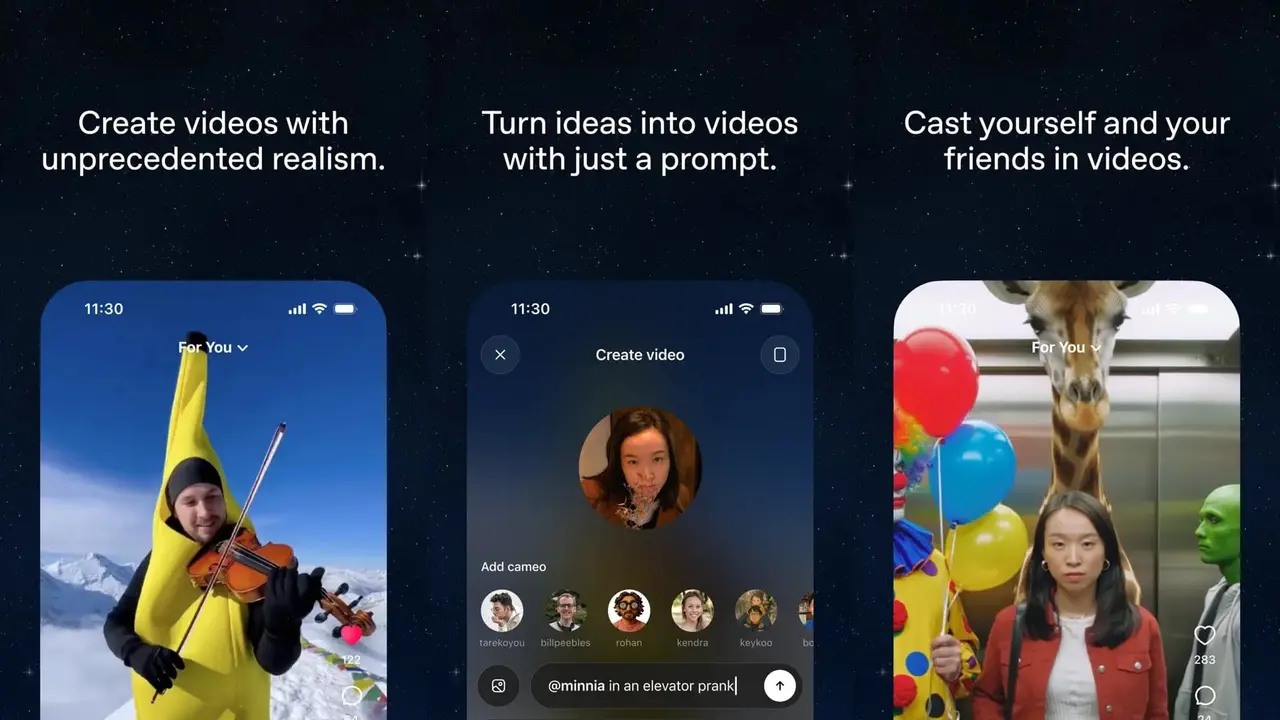
Source: MacRumors
Another significant addition is the storyboarding feature, available exclusively to Pro users on the web version. This tool allows users to plan out their videos frame by frame before generation, mirroring professional filmmaking processes
2
4
.Concerns and Controversies
While Sora 2's success is undeniable, it has not been without controversy. The app's ability to generate highly realistic deepfake videos has raised ethical concerns, particularly regarding the potential misuse of likenesses
1
. In response, OpenAI has implemented measures allowing users to specify how their likeness can be used within the app3
.Copyright infringement has emerged as another significant issue. Users have been generating videos featuring copyrighted characters in potentially brand-damaging scenarios, prompting OpenAI to give copyright holders more control over their content
3
5
.Related Stories
Future Prospects
As Sora 2 continues to evolve, OpenAI faces the challenge of balancing rapid growth with responsible AI development. Bill Peebles, head of Sora at OpenAI, has promised more features and fixes to address overmoderation issues
3
. With its current trajectory, Sora 2 is poised to significantly impact the landscape of AI-generated content, potentially reshaping how we create and consume video media in the near future.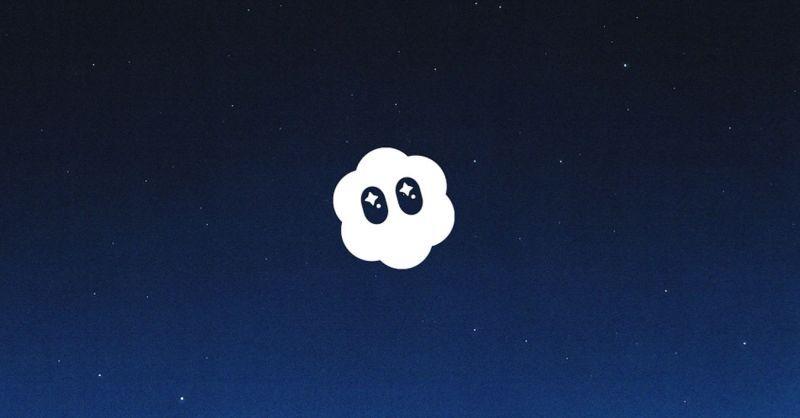
Source: Digital Trends
References
Summarized by
Navi
[1]
Related Stories
OpenAI Launches Sora: A New Era in AI-Generated Video Creation
10 Dec 2024•Technology

OpenAI Expands Sora with Character Cameo Feature, Enabling Reusable AI Video Characters
31 Oct 2025•Technology
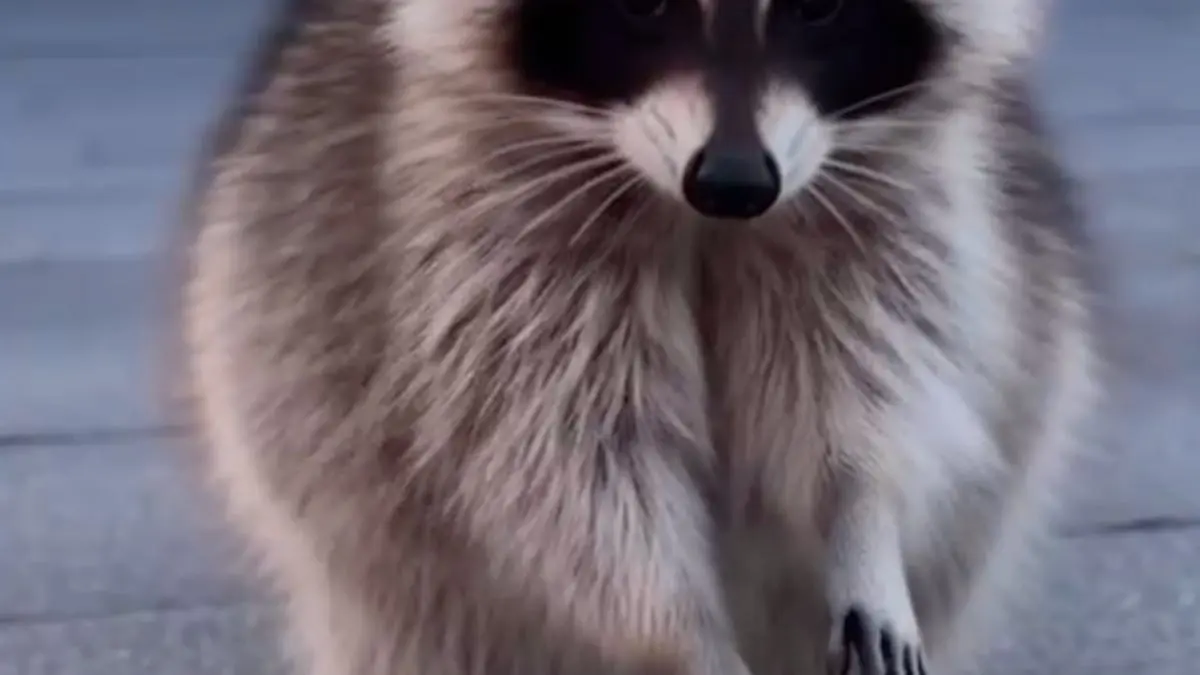
OpenAI to Integrate Sora AI Video Generator into ChatGPT, Expanding AI Content Creation Capabilities
01 Mar 2025•Technology





